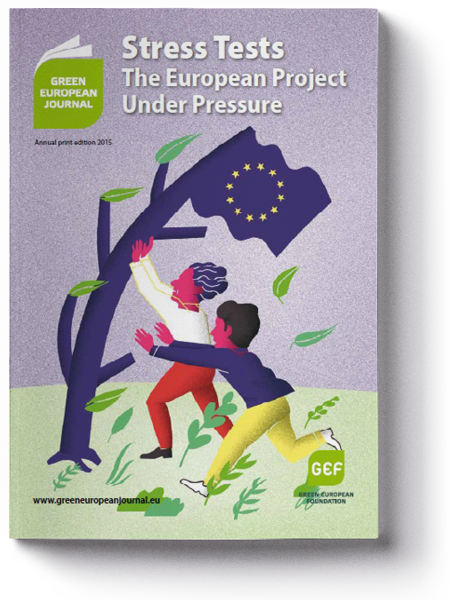Is the growth promised by the Transatlantic Trade and Investment Partnership (TTIP), a modest 0.5% of GDP in the EU, plausible in the context of high unemployment? Or will German industry and the City of London reap most of the benefits on the European side, further widening the economic divergence between Member States, and increasing social inequality in Europe?
Let us analyse the five substantive questions raised by the TTIP. First, we must ask ourselves if the gains, in terms of supply-side economics, expected from trade liberalisation will compensate for the lack of domestic demand perpetuated by the fiscal and wage austerity being implemented on both sides of the Atlantic.
Secondly, given that trade tariffs are already very low and that any separation of European and American markets is primarily due to non-tariff barriers which are deeply rooted in the fabric of society, is it possible to achieve sufficient convergence of norms and regulatory standards to a point where the cultural and social ‘barriers’ to trade are eliminated?
And in this vein, whether it is hormones in livestock, GMO’s, chlorinated chickens, privacy protection, plastic packaging, cyber laws, financial, social and environmental standards (including and notably shale gas extraction), is upwards harmonisation or mutual recognition of standards between the U.S. and EU possible? Europe and the United States do not have the same collective preferences, particularly in terms of risk aversion, nor the same institutional models; Europe tends towards the precautionary principle, giving priority to the law and thus preventing risk, whereas America prefers a ‘litigation after damage’ approach.
Thirdly, how do we see the negotiation between the United States and Europe in the (many) areas where the EU has unfortunately not yet achieved unity – energy, finance, telecommunications, railways, digital industries, defence industry – or where European interests are directly opposed to those of the USA; for example in the case of Airbus and Boeing, agriculture, or cultural output? Is a negotiation with a strong and united America really a negotiation of equals?
Fourth, how to counter the formidable power of the American lobbies, primarily in Congress, but also in Brussels, where they already ensure “friendly” influence at the heart of the European institutions and national governments?
And fifth, how does one reconcile the coexistence of two international reserve currencies in an integrated “Transatlantic Internal Market”, for example with a declining dollar and rising euro? Can we envisage a dollarisation of European national economies, explicitly or by pegging, in case of collapse of the eurozone?
Europe tends towards the precautionary principle, giving priority to the law and thus preventing risk, whereas America prefers a ‘litigation after damage’ approach.
To date, these five questions remain open.
Treating the TTIP as an ‘FTA-plus’, when it is in fact an ‘FTA gone too far’, reveals the extraordinary short-sightedness of the European Council. How else can one explain, firstly, the neoliberal conformity that still prevails in European fora, despite the crisis, and also activities of the lobby groups, especially those in Brussels who represent very specific American interests? The political (or mercantile) affinities between London, Berlin and Washington also play a considerable role. Amongst other European heads of state, several have only vague ideas about the complex relationship between these two compatible, but ultimately radically different, concepts: European identity and the Atlantic ‘strategic partnership’. We shall attempt to shed some light on the matter with the following three proposals.
First of all, regulatory convergence between the U.S. and the EU, by superimposing itself on the completion of the Single Market, will shift the policy focus away from EU internal unity. This Common Market unity is an absolute priority for Europe, as well as being a critical element of its political identity; pursuing the TTIP will instead expose it to dissolution. In addition, it opens up the possibility of a U.S. “divide and conquer” strategy in the heart of the legislative process of integration.
Furthermore, the effective substitution of multilateral negotiations at the WTO level by a EuroAmerican regulatory block setting international standards, and the resulting pressure for China to abide by them, combined with the Trans-Pacific Trade Partnership (TTP) will appear to Beijing no less than a containment strategy. And what’s more, if it is indeed a containment strategy, it will not be a very effective one, given China’s bargaining power, stemming from the expected growth in the Chinese domestic market, and the ability of China to implement a Regional Comprehensive Economic Partnership (RCEP) to compete with the TTP.
Finally, those in favour of a NATO rebalancing, in particular in light of the distancing of the United States, should be seriously concerned to see the European dependence on the US increasing; the reliance shifting from strategic to economic. This would go against the necessary convergence of America and Europe towards political parity, a priority which should lie at the core of NATO. A European common defence policy would strengthen the Atlantic Alliance even as the TTIP would weaken it, fostering a return to anti-Americanism in Europe.
This article was first published as a Madariaga paper in 2013.

